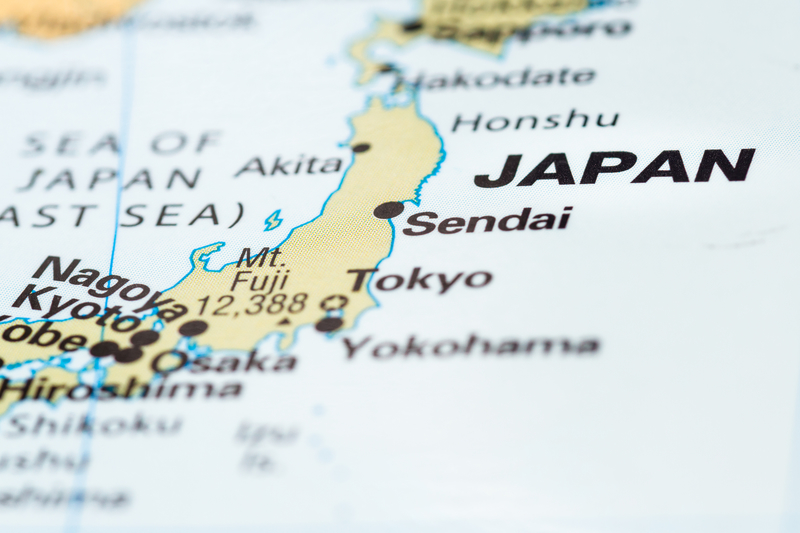
photo credit ID 104671681 © Wollertz
Relocating to Another Country – Phew – It’s Hard!
I remember the time before I moved to Mexico – I didn’t really prepare myself culturally at all, and I wish I had. I also wish I had spoken to other Americans who had previously moved to Mexico. But, for the good and the bad, my style is to take action first, ask questions later, and that’s exactly what happened when I moved to Mexico.
How to Prepare for a Relocation Assignment
I’m sure if you’ve also been an expat in another country, you’ve had the same experience. How do you prepare yourself for something that you didn’t know existed, right? In the early 2000s, there wasn’t Youtube! Now, we can learn all about moving to a new country from those who have done it before us – they almost all have videos online now. And that’s how we learned some about the cultural and everyday living differences that there are in Japan.
5 Things that will Surprise you when Relocating to Japan
I actually went there to spend a month at a Japanese immersion school in 2016. So this is a compilation of differences from my own experience and from others.
- The Squat Toilet
Like in some bathrooms that I found in France, Japan also has a nicer version. In France I remember they called it the Turkish toilet or Turkish bathroom, and it was simply a hole in the ground at the back of the restaurant or bar – there was a door of course. But in Japan, it is like an ivory toilet that is in the ground, not raised, like the ones in the USA. Of course, there are Western style (American) toilets found in Japan as well, but these toilets are quite common also. I still prefer a nice sturdy seat to sit on while I use the restroom! - Take Off Your Shoes
Taking your shoes off before entering a restaurant, dentist or doctor’s office! Yes, that’s right, no shoes allowed, even at the doctor’s. At first it might feel very strange to be walking around your doctor’s office without shoes on, but think of how clean the floor is because of this. You have not brought in anything from the street. So make sure your socks match. This can stress out some Westerns, as it can take time to get your shoes on and off, and there might be people waiting behind you. But do not stress, and if this does stress you out, make sure to wear slip-ons the next time you have a doctor’s appointment. - Slimey, Gooey, & Sticky Foods
Nebaneba is a phrase to describe the consistency of these types of slimy foods – although slimey is not exactly the word we’re looking for. Sometimes, you just can’t find the exact translation if it doesn’t exist in the English-speaking world. Foods that have this texture/consistency are foods like natto (Japanese dish made of fermented soybeans), yamaimo (a Japanese yam), and okra (not the delicious southern fried one, but the natural one is quite slimey). This texture might not be a favorite for Americans. - Going Naked Into the Onsens
I personally experienced this one and I jumped right into the culture (after a small fight with the onsen employee). An onsen is a Japanese hot spring, a bathing facility that you must enter naked (you are outside). I, the American, tried to go in with my bathing suit on, and the employee was absolutely not having it. She had learned the word for ‘naked’ in English and she kept repeating it to me: naked, naked, naked. Finally, I went for it. I felt enormous, even though I am only 5’8”. It was very relaxing, even though I had to go in with no clothes – being outside in nature naked was a great experience. - Speaking Keigo to those Older than you or your Boss
Just as in English we use Sir, Ma’am, Mister, and Mrs, the Japanese have an honorific way of speaking to someone in order to show them respect. This can be challenging for more casual cultures, where if you get to know someone more, you start to talk more casually with them, in Japan, you will always need to use keigo with someone older than you or someone higher in rank than you, no matter how long you have known them. Keigo goes farther than Sir and Ma’am though. They have entire verbs to use instead of the regular verb. For example, if you ask your friend ‘do you want something to eat?’ you use the verb ‘eat’. But in keigo, you would use a completely different word for the verb ‘eat’. Intense! Even if you have married someone from Japan, you must always use keigo with your in-law’s family, as this will always show them respect and their rank over you. This is actually similar in Hispanic countries as well, although they do not use a completely different word for the verb. Kids will even use it with their parents sometimes, throughout their lifetime. Or older couples using keigo with each other. To understand this, they might be showing each other the utmost respect, as if they are trying to honor each other still. It’s seen as cute, not as formal.
We hope this has helped you understand a little more about the Japanese culture. We thought the above differences were some of the more shocking for us, so they were important to share. When we visit Japan again, we will take great notes about even more differences, and we will share them with our expat followers so that they can be more prepared for their job relocation in Japan. Enjoy the adventure.
If you are interested in learning Japanese for your job relocation, please send us a message or give us a call. We would be happy to set you up with one of our native instructors, whether you prefer classes in your home in the US before going, or in your office or home in Japan once you get there, and if you want to stay with the same instructor throughout, we can set you up with someone online – always a live instructor – no video classes, ever! The only way to get fluent is through real conversation. Don’t forget it!










